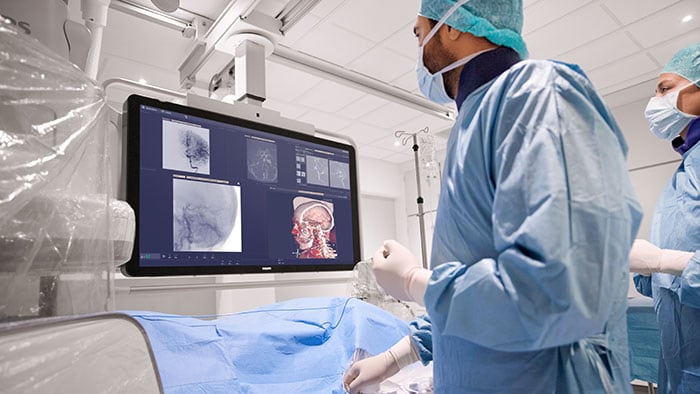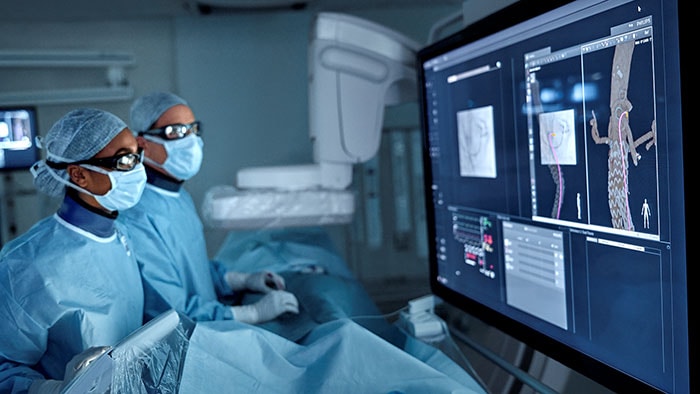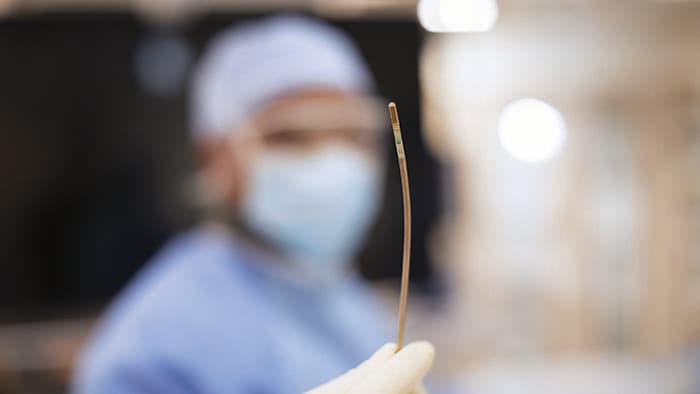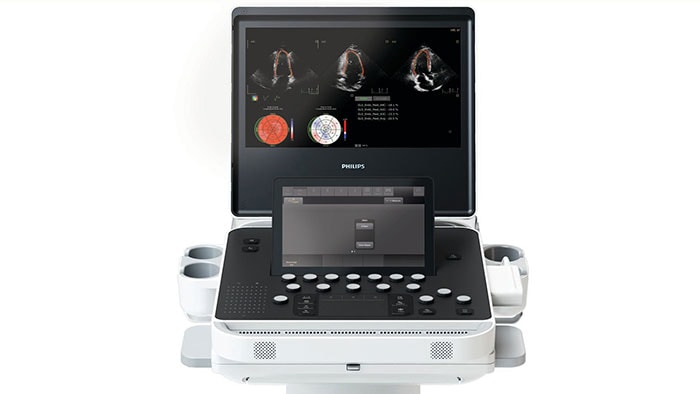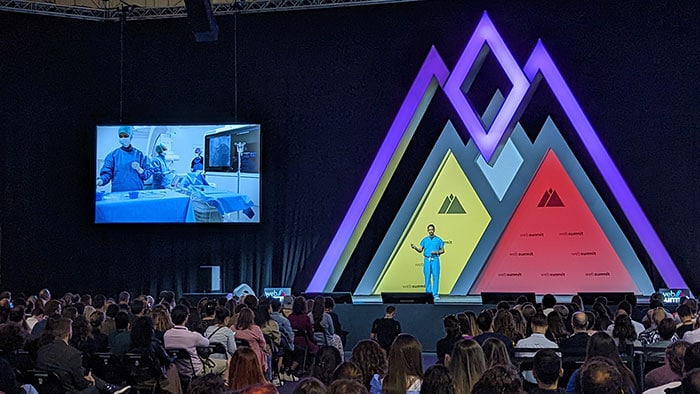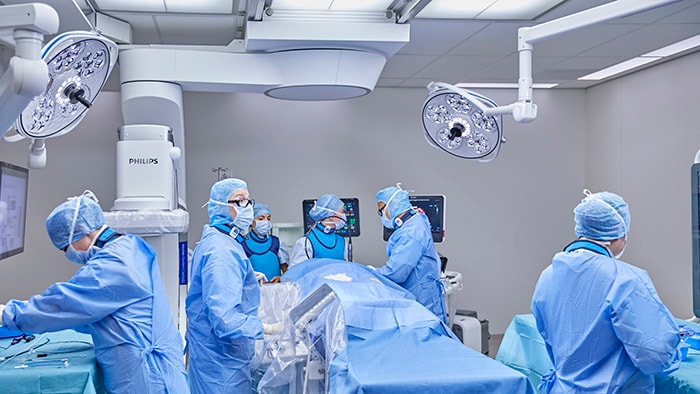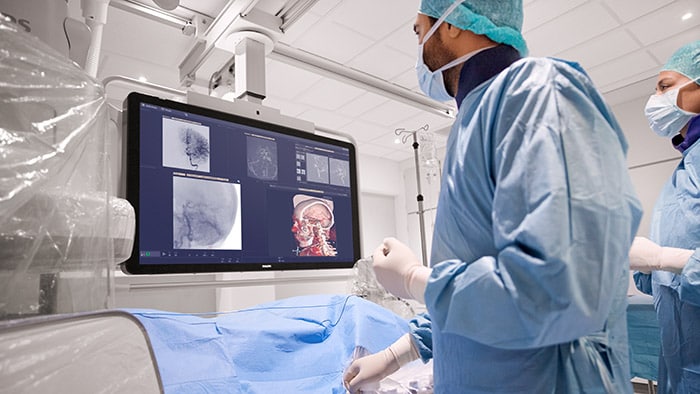For people living with Peripheral Arterial Disease (PAD), particularly people of color, amputations are all too common, and in many tragic cases, could have been avoided. We asked Philips’ Peripheral Vascular Category Leader Heather Hudnut Page about the role Philips is playing to improve the situation in the U.S., especially when COVID-19 is making some patients reluctant to seek treatment.
What is PAD and why does it so often lead to amputation?
Heather Hudnut Page (HHP): PAD is a serious health condition in which narrowed arteries reduce blood flow to the legs. If left undiagnosed it can leave the legs and feet so damaged that amputation is the only option. The best way to prevent these amputations is early diagnosis and treatment, which typically involves medication and lifestyle changes and can also require minimally-invasive revascularization procedures to restore blood flow to the affected limb. However, many patients struggle to access the necessary healthcare, which means they often don’t seek care until it’s too late. Here’s a sobering statistic: in the U.S., 50% of patients who receive a non-traumatic lower limb amputation die within 5 years [1], with some 30% of patients lacking any formal workup before the decision to amputate is made [2]. Preventive care can be a life-or-death decision for patients with PAD. If patients with PAD present later, the cases may grow in complexity, straining the resources or expertise, particularly in U.S. rural communities, where vascular-related amputations are taking their toll [3]. For people with advanced PAD who develop critical limb ischemia (CLI), which often requires an amputation, the outlook is grim. A quarter of patients who develop CLI will be dead after one year; more than 60% will be dead after five [1].

What are you doing to reduce the number of amputations?
HHP: We’re focusing on three areas: firstly, increasing awareness of the problem with patients and their loved ones; secondly, connecting patients to the tools they need to seek high-quality treatment; and thirdly, increasing awareness of disparities of care with healthcare providers in order to improve access to care. An important part of our activity is PVDandMe.com, a website we’ve launched to help patients learn more about their disease and find a qualified vascular specialist to evaluate them.
How is the COVID-19 pandemic affecting this patient group?
HHP: Amputations from PAD are linked to socioeconomic and racial disparities in health care access, and we’ve only seen these disparities in care increase during the COVID-19 pandemic [4][5]. Patients are understandably scared to receive treatment during a pandemic, and it can be difficult for them to see the payoff of preventive care, especially when it requires an invasive procedure. But by spending the extra time it takes to walk patients through their care options, physicians can save PAD patients’ lives. Amputations are already too common for people living with PAD — and even in normal times, delayed treatment for these patients can further exacerbate disparities in care. There’s a risk that amputation rates will soar during the COVID-19 pandemic unless all of the PAD community step up to ensure amputations are a last resort for people living with PAD.
What solutions does Philips offer for treating PAD?
HHP: To help fight the over occurrence of amputations, we do extensive physician education and training on Philips’ solutions, which is something we’re now offering virtually as a result of the pandemic. We broadcast live cases and facilitate virtual in-case proctorships to give interventionalists access to real-world, real-time support. We are also innovating procedures by combining imaging and therapy and expanding access to care by offering our solutions in both the hospital and office based lab (OBL) settings. Patients are often more comfortable going to an OBL rather than a hospital and our Philips SymphonySuite program supports physicians opening OBLs to expand access to care for more patients. Finally, we support the Global CLI Society (#CLIFighters), the Amputation Prevention Symposium and the Cardiovascular Coalition, who are all focused on amputation prevention. Our goal in this space is to continue simplifying clinical procedures and improving clinical and economic outcomes as part of our ultimate goal to make amputations for people with PAD what they should be – a last resort. Find out more about how Philips is bringing image-guided therapy closer to patients worldwide in this recent blog from Chief Business Leader Bert van Meurs. [1] Methodist Debakey Cardiovasc J. 2012 Oct-Dec; 8(4): 10–14. doi: 10.14797/mdcj-8-4-10 [2] https://tntribune.com/tristars-doctor-advocates-vascular-disease-awareness/ [3] https://www.jvascsurg.org/article/S0741-5214(19)30821-3/fulltext [4] https://pubmed.ncbi.nlm.nih.gov/29330260/ [5] https://www.cdc.gov/coronavirus/2019-ncov/need-extra-precautions/racial-ethnic-minorities.html








